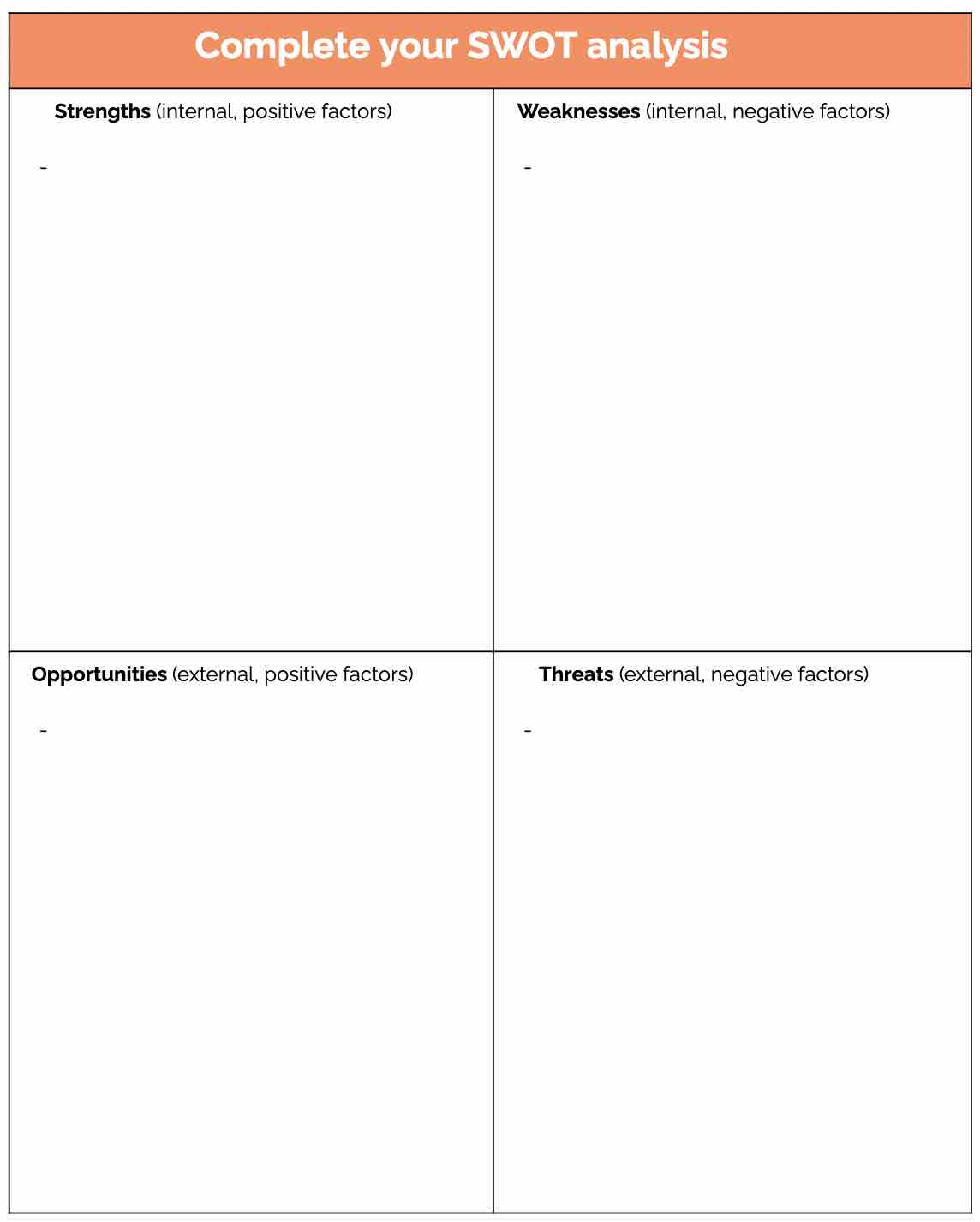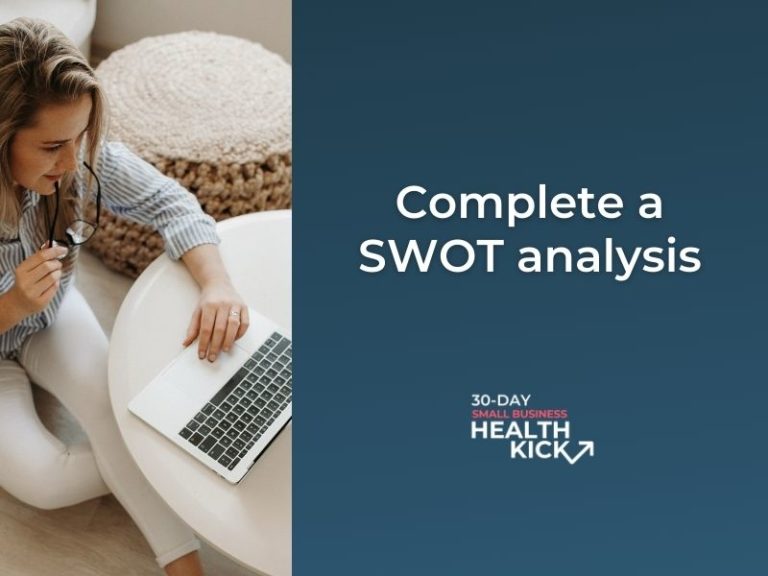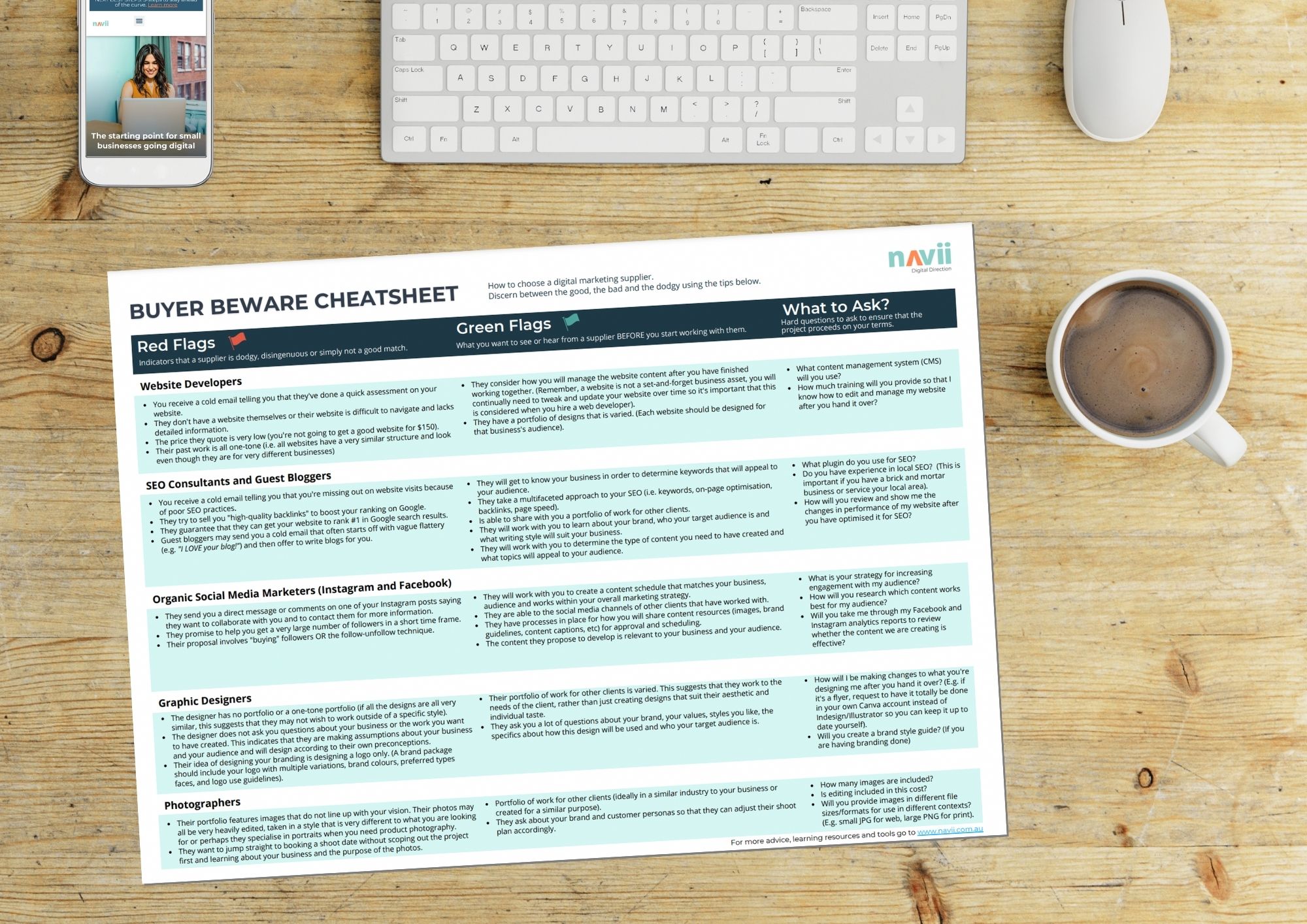A SWOT analysis is a systematic way of identifying strengths, weaknesses, opportunities and threats within your business and the market that you operate in. It’s a great tool to help businesses take a look at multiple factors together and it informs the setting of tangible goals.
Why do a SWOT Analysis
The insights you can uncover in a SWOT can be gold gems of strategic clarity to help you to focus your priorities and this is very important in a marketplace that is constantly changing, like in the COVID pandemic. A SWOT analysis is an important step in developing your business plan and can be used to prepare for the improvements in your marketing and online presence.
For example, you can conduct a SWOT across your business generally or you can narrow the scope of your SWOT and analyse your customer feedback and reviews. It is a versatile tool that encourages you to think about your internal and external business environment and then reflect on the holistic story that your analysis presents.
The Construct of a SWOT Analysis
Strengths:
These are internal positive factors within your control. Think about the assets that your business has, anything that gives you an advantage over your competitors.
Ask yourself the following questions:
- What do we do well?
- What resources do we have?
- What talent or technology do we have?
- What are our tangible assets?
Weaknesses:
These are internal negative factors that are within your control. Think about elements within your business that place you at a competitive disadvantage or detract from the value of your product/service.
Ask yourself the following questions:
- What do we lack?
- What can we improve on?
- Are our processes inefficient/wasteful?
- Are there gaps in our team?
Opportunities:
These are external positive factors that you don’t have immediate control over. Think about the things that are likely to contribute to the success of your business.
Ask yourself the following questions:
- Are there possible alignments/collaborations we could make with neighbouring businesses?
- Are we receiving positive feedback from customers…what insights can we draw?
- Is there a market demand for our product/service?
- Is there any available funding/training available to us?
- Are there market trends eg. consumer demand for environmentally friendly products that we could align with?
Threats:
These are external negative factors that you don’t have immediate control over. Think about what might put your business at risk and how you might handle the negative impacts.
Ask yourself the following questions:
- What are my competitors doing better?
- Is your business subject to severe weather or other risks?
- Have market trends changed since COVID-19?
- Could emerging technologies/regulations change the way we operate?
Complete the SWOT template below, applying the above questions to your business. If your business is still in the planning stage, consider what you anticipate to be your strengths and weaknesses and what opportunities and threats might occur.

Turning Insights into Action
Looking at your SWOT, what jumps out at you? Can you identify strategies for growth or product improvements? Maybe there are urgent operational priorities that you need to address.
Take these insights and develop an action plan so that you are making a commitment to continual improvements in your business and moving forward towards your business goals.



